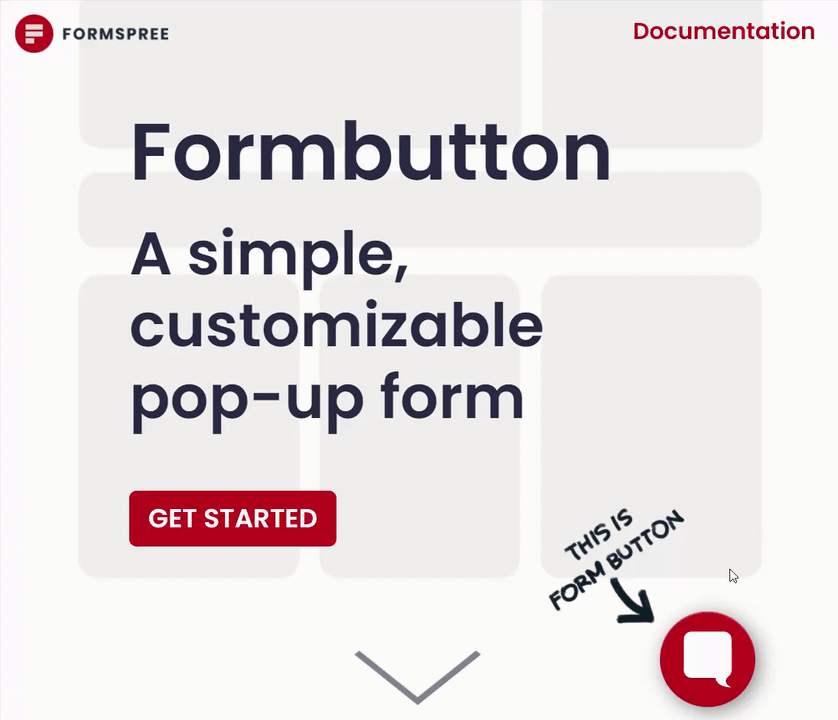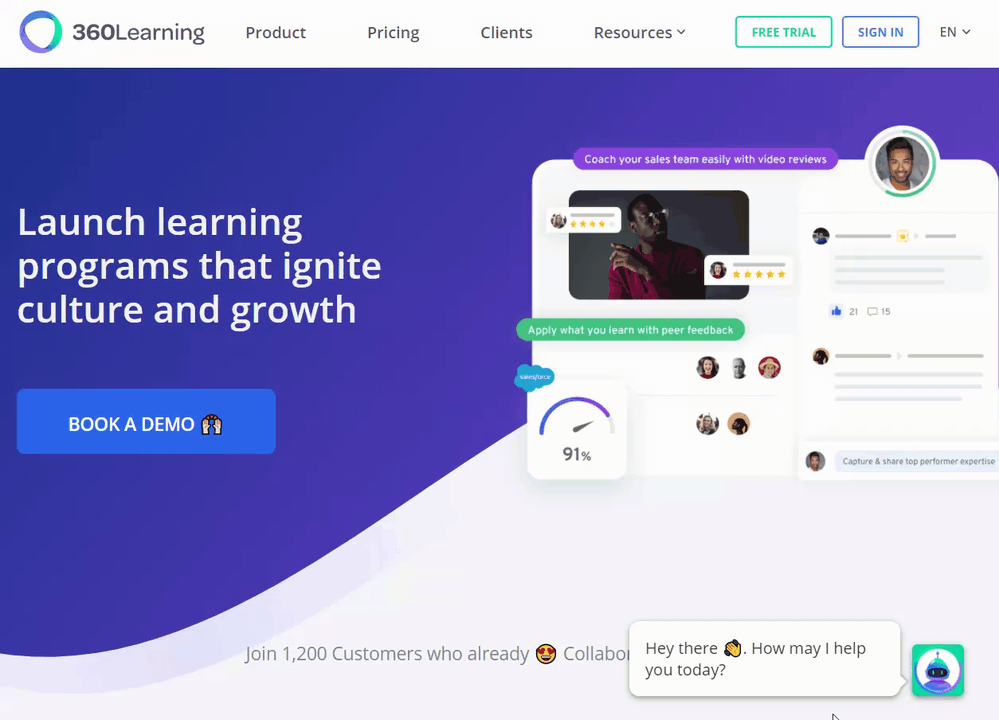Is Chat Support Right for You? Pros and Cons You Might Not Have Realized
Learn the pros and cons of chat support, along with best practices and alternatives.
It seems like every website has chat support, whether live chat, a bot, or a blend of the two. But before you jump on the chat bandwagon, consider whether it’s the right option for you.
Whether or not chat support is useful to you depends on whether it helps you accomplish your goals. Will it improve your customers’ experience? Will it increase revenue? Do you have the customer support and/or sales infrastructure to support it? If you answer yes to all three, then, by all means, get thee to a chat service. But if you aren’t sure, read on.
We’ve put together some pros, cons, best practices, and alternatives to help you decide whether chat support is right for you.
Do You Need Chat Support?
There are solid cases both for and against using chat support. The decision usually boils down to implementation. Here are some pros and cons to help you weigh your options.
Pros
It boosts revenue. There is some strong data suggesting that chat support can increase retail sales. A Forrester research study found that website visitors who used chat were 2.8 times more likely to convert than those who didn’t use chat, and they spent 60% more money. Help-desk software Kayako found that 38% of customers were more likely to buy when a company offered chat support.
Customers like it. Four times as many people are using live chat than they were five years ago, and it’s among the fastest-growing support channels, according to the 2020 Zendesk Customer Experience Trends report. Kayako found that live chat was the most preferred support channel (41%) compared to phone (32%), email (23%), and social media (3%). Chat also taps into our psychological reward drives for anticipation and instant gratification.
It’s fast and efficient. Live chat support allows you to solve customer problems in real time. Using a bot, or conversational AI, lets you offer customers a connection point 24/7. Support agents can also solve more tickets using chat than phone or email alone, and they can often juggle multiple chat conversations at once.
These pros apply when chat support is well executed. Poor implementation can wipe all those gains away.
Cons
High expectations: Customers expect a response in live chat within five minutes or less. If you don’t have the staffing support to meet those expectations, you risk annoying the customer. Customers also report being frustrated by hearing scripted responses and having to repeat themselves, which are common pitfalls with chatbots.
Time-zone challenges: The internet is 24/7, but your staffing capabilities likely are not. Customers may be annoyed if they can’t reach you when they are used to communicating with you via live chat. To mitigate this, some businesses hide the live chat button during off-hours or supplement with a chatbot.
Internal silos: Customer data is frequently siloed between departments and tools. But customers don’t care if they are chatting with marketing, sales, or customer success, as long as their questions are answered or their problem is solved. Often, though, only one team has access to chat with customers. That can put customers at a disadvantage while support reps scramble for answers. According to HubSpot, employees waste 10% of their time looking through disconnected systems to answer a customer question.
Chat support can be a valuable tool for your kit if you have the customer service, sales, and marketing in place to power it (or if you have the desire to build them). If you don’t, it may not be worth the investment.
If No, Try Formbutton
We tried out live chat support at Formspree, but we’re a small team. “Customer support” is usually one of our two cofounders. And, frankly, we didn’t like having to be “always on.” Plus, most prebuilt chat widgets didn’t match our site styling.
You might feel the same way and decide that chat support isn’t right for your business, whether due to constrained staffing or other challenges. Even so, you should still be able to offer a friendly and convenient way for your customers to get in touch with you. We built Formbutton for exactly this scenario.
For this solution, we knew we still wanted a pop-up. They are a highly visible and easily clickable way for customers to reach out. As a form company, that seemed like a problem we could solve. Formbutton is a widget that looks like a chat icon, but clicking it reveals a simple contact form. It’s mobile-friendly and accessible, and it works with all of Formspree’s native plugins.

Formbutton is fully customizable and easy to install. Check out our gallery and docs to get started.
If Yes, Blend Live Chat and Chatbots
If you’re still interested in trying chat support, you need to look at live chat (a 1:1 conversation with a human) and chatbots, an automated program that relies either on AI or programmatic IF/THEN logic.
Both methods have potential consequences. If your live chat support team is bogged down with simple questions, their time isn’t being used efficiently, and their ticket resolution rate will be slower. Chatbots, on the other hand, are limited in their ability to solve complex customer issues.
Blending a chatbot with live chat support offers you the best of both worlds.
Live Chat Best Practices
Live chat is best used to help customers solve problems that need a human touch. To get the most out of live chat, we recommend the following:
- Staff smart. Look up your traffic patterns in Google Analytics or your ecommerce platform, and identify when people are using your website the most, and align your staffing schedule accordingly. Many chat software tools also allow you to control when and where the chat box appears. Deploying it at the moment customers are most likely to need chat support lets your representatives work efficiently.
- Build a workflow. If you implement live chat without internal systems to support it, your team will likely become overwhelmed. Build a clear process for how agents are assigned, how tickets can be escalated, and how you will monitor support metrics. Smooth internal processes will make your agents’ lives easier and help them serve your customers better.
- Track feedback. Continuously evaluating customer feedback will help you build a better chat experience for your users over time. Chat transcripts are also a valuable source of customer information that should be analyzed along with the rest of your product or website data to improve your overall CX.
 Sellbrite, an ecommerce service, uses Intercom to provide live chat support during business hours.
Sellbrite, an ecommerce service, uses Intercom to provide live chat support during business hours.
When your support team is offline, you can ask customers to leave a message or point them toward a bot.
Chatbot Best Practices
Chatbots are best for automating simple tasks, like booking meetings, offering discounts, or pointing people toward FAQs. They can also extend your availability during hours when your live chat representatives are offline. Our recommendations for chatbots include:
- Build a conversation tree. Chatbots are not good at open-ended conversations. You need to give the bot clear logic so that the bot can correctly direct customers where they need to go. The more complex the problems you want the chatbot to solve, the more complex the conversation tree. AI expert Martin Lambert has some solid advice for building deep logic bots in this article. Simpler bots are more straightforward and can be created with little or no code.
- Give it a personality. Chatbots don’t have to be boring. The opening greeting, whether it’s a simple “Hello” or “Avast, me hearties!” tells customers a lot about a brand’s voice and what kind of experience the brand wants users to have. Spend some time thinking about this: if your brand was a bot, what kind of voice would it have? And look to others for inspiration.
- Point people toward a human. Chatbots are inherently limited, and your customers need to know how to get in touch with a representative if their needs aren’t addressed. If you are relying on bots to cover times when live chat isn’t available, point users toward a contact form, and let them know a human will respond during business hours.
 360Learning, an ed-tech company, uses a bot with multiple-choice questions.
360Learning, an ed-tech company, uses a bot with multiple-choice questions.
There are plenty of tools out there for offering both live chat and chatbots. We recommend using software that is fully integrated with your entire customer support system:
- Zendesk, for example, can seamlessly switch routing between different support channels, such as phone, email, and chat.
- HubSpot’s chat tool comes free with their CRM.
- Drift’s chat tool is part of a suite of website communication services that work together.
Integrating your chat service with your support tech stack is crucial for overcoming silos and cutting down on admin time.
To Chat or Not to Chat
Ultimately, whether or not to use chat support is a question only you can answer. Hopefully we’ve made that decision-making process a bit easier by outlining your options along the way. If you opt for Formbutton, drop us a line and let us know how it turns out.